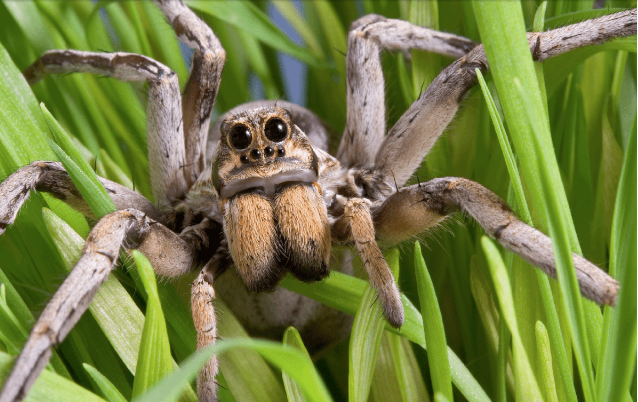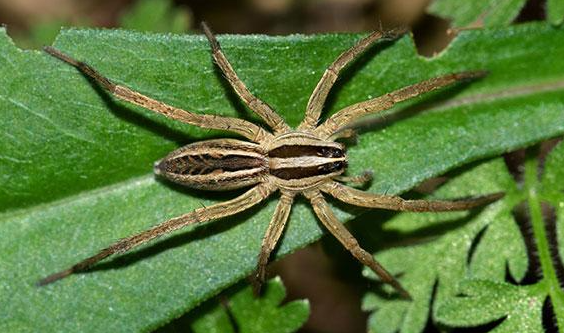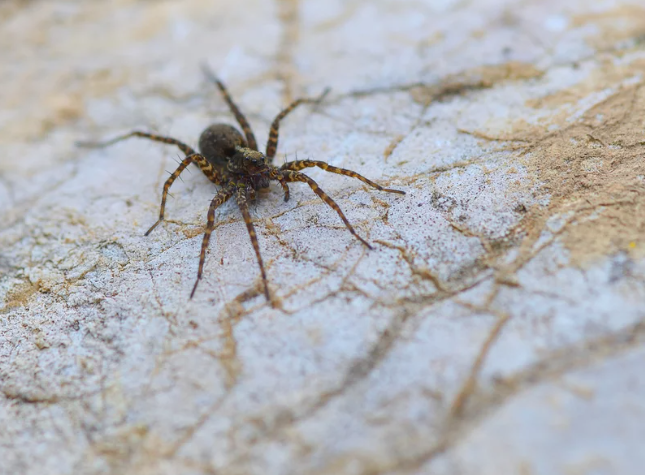How do Spiders Obtain Nutrition? (Facts Check) 2024

When it comes to nature’s diversity, the feeding habits and nutritional requirements of spiders offer an intriguing window into their world. A spider’s ability to sustain itself, despite the harsh realities of the environment, makes for a fascinating subject of study. Let’s unravel the complex journey of “How do Spiders Obtain Nutrition?”. Keep reading!
Spider Diet

Just as there are thousands of species of spiders, there’s also a tremendous variety in their diets. Most spiders are known for their carnivorous habits, primarily feeding on insects, other spiders, and small invertebrates. Some larger spiders may even consume small birds or lizards. Interestingly, a few species like the Bagheera kiplingi, famously known as the vegetarian spider, primarily feeds on plant-based food sources such as acacia tree buds.
Spider Hunting Techniques

Spiders use a range of hunting techniques to secure their prey. From building intricate webs to actively hunting, spiders have developed a plethora of skills for capturing their next meal. Web-building spiders, like the Orb Weaver, create beautiful, intricate webs to trap their unsuspecting prey. Others, like the Wolf spider, use their excellent vision and speed to outmaneuver and capture prey on the ground.
Venom and Spider Prey Consumption
A spider’s venom plays a crucial role in their nutrient acquisition. When a spider captures its prey, it uses its venom to immobilize and start the digestion process. The venom contains a cocktail of chemicals and enzymes that liquefy the prey’s internal tissues. This process allows spiders, who have narrow digestive tracts, to consume their prey in a “liquid” state. It’s a resourceful and efficient method that exemplifies spiders’ incredible adaptability to their environment.
Spider Digestive System
Once the prey’s tissues are liquefied, the spider’s digestive system takes over. Spiders have a unique ‘extracorporeal’ digestion process, which means they digest their food outside their bodies. After the venom does its job, spiders regurgitate digestive fluids onto their prey, breaking it down further. Then, they ingest the nutrient-rich soup, with the food particles being absorbed in the midgut, where necessary nutrients are extracted for survival.
Spider Nutrient Absorption
Just like any other living organism, spiders require a combination of macronutrients and micronutrients for their survival. They gain proteins, fats, and sugars from their prey, which are essential for growth, reproduction, and web-building. Certain vitamins and minerals, such as potassium, sodium, and calcium, are also critical for their physiological functions.
What Happens If a Spider Cannot Find Enough Food?

Nature can often be unforgiving. Spiders, like any other creatures, face periods of scarcity where food resources are limited. However, spiders have evolved to deal with such challenges. They have a slow metabolic rate and can survive long periods without food, with some able to last several months on a single meal. This attribute makes them incredibly resilient to harsh and unpredictable environments.
Spider Feeding Habits
While there are general characteristics among spider species, it’s essential to note that the diversity within the arachnid family results in varying feeding habits. Some spiders are specialists, hunting specific types of prey, while others are generalists, feeding on a wide range of food sources. The complexity of their dietary habits is yet another testament to their adaptability and resilience.
Overcoming Nutritional Deficiencies
While spiders are renowned for their adaptability, they are not immune to nutritional deficiencies, particularly when their regular diet is not diverse enough. Certain studies show spiders, when deprived of essential nutrients, may develop deficiencies impacting their survival and reproduction rates. For instance, a lack of protein in their diet can lead to diminished web-building abilities and lower reproductive success.
Alternative Feeding Strategies
Spiders are not only survivors; they are creative opportunists. Beyond their traditional prey, some spiders have developed surprising strategies to supplement their diet. Spiders like the water-dwelling diving bell spider, for instance, prey on small fish, while the aforementioned Bagheera kiplingi is primarily herbivorous. Moreover, the regal jumping spider is known to feed on nectar in addition to their typical insect prey.
In times of prey scarcity, spiders have been observed displaying cannibalistic behavior, where larger or more dominant spiders prey upon their smaller or weaker counterparts. While this behavior might appear brutal, it underscores spiders’ incredible drive for survival.
How Do Spiders Stay Hydrated?
Water is an often overlooked but vital aspect of spider nutrition. Spiders primarily obtain water from their prey, but they can also drink from droplets on their webs or on plant surfaces. Certain species, such as desert-dwelling spiders, have developed adaptations to survive in extremely dry conditions, storing water in their bodies and reducing their metabolic rates to conserve hydration.
Spider Nutritional Adaptations
The nutritional requirements and feeding habits of spiders have been shaped by millions of years of evolution. These adaptations allow spiders to thrive in a wide range of environments, from dense rainforests to arid deserts, showcasing their exceptional resilience and adaptability.
Spiders are equipped with specialized mouthparts and structures, called chelicerae and fangs, designed to immobilize and ingest prey. Some spiders have developed complex venom compositions to overcome the defenses of their prey, while others have evolved intricate web designs tailored to catch specific types of prey. All these adaptations are targeted towards ensuring that spiders can effectively obtain the nutrients they need to survive.
Spiders and Ecosystem Health
Spiders play a critical role in maintaining the balance of our ecosystem. As predators, they control insect populations, preventing outbreaks of pests that could otherwise damage crops or spread diseases. Furthermore, the diversity of spiders and their diet can serve as an indicator of ecosystem health. A decline in spider populations or a change in their feeding habits may signal changes in the ecosystem, alerting conservationists to potential problems.
FAQs
What do spiders eat to obtain nutrition?
Spiders primarily consume insects and other small invertebrates. Some larger spiders may eat small birds, lizards, or rodents, and a few species are even known to eat plant matter.
How do spiders catch their prey?
Spiders use a variety of hunting techniques, including building intricate webs, ambushing, stalking, or actively chasing their prey.
What is the role of a spider’s venom in obtaining nutrition?
A spider’s venom plays a crucial role in immobilizing and digesting their prey. It contains chemicals and enzymes that liquefy the prey’s internal tissues, making it easier for the spider to consume.
Do spiders rely solely on insects for their nutrition?
While insects make up a significant portion of many spiders’ diets, spiders also consume other types of prey, including other spiders, small invertebrates, and even small birds or reptiles. A few species are known to consume plant matter.
Are there any specific nutrients that spiders require in their diet?
Spiders require a combination of proteins, fats, sugars, vitamins, and minerals. These nutrients are critical for growth, reproduction, web building, and general physiological functions.
The world of spider nutrition opens up fascinating insights into the resilience and adaptability of these creatures. Their hunting strategies, unique digestion processes, and nutrient absorption underline the immense diversity and complexity within the spider kingdom. The more we understand, the more we can appreciate the incredible natural marvel that is the spider.
Are there any other food sources for spiders apart from insects?
Yes, spiders consume a variety of food sources. In addition to insects, they eat other spiders, small invertebrates, and occasionally small birds or reptiles. Some spiders are even known to consume plant matter or nectar.
Do different species of spiders have different feeding habits?
Yes, feeding habits can vary greatly among spider species. Some are specialists, focusing on specific types of prey, while others are generalists, feeding on a wide variety of prey.
Can spiders survive without consuming prey?
Spiders can survive without food for a while due to their slow metabolic rates, but eventually, they need to consume prey to obtain necessary nutrients for survival.
Also Read: Garage Door Styles with Windows [Cover all Modern Styles]
Conclusion
By understanding “How do Spiders Obtain Nutrition?”, we can appreciate their important role in the world’s ecosystems and gain valuable insights into their diverse survival strategies. Their dietary habits demonstrate a powerful testament to the adaptability and resilience of life, underpinning the fascinating mystery that is spider nutrition. The world of spiders, it seems, is filled with as many surprises as there are species.






